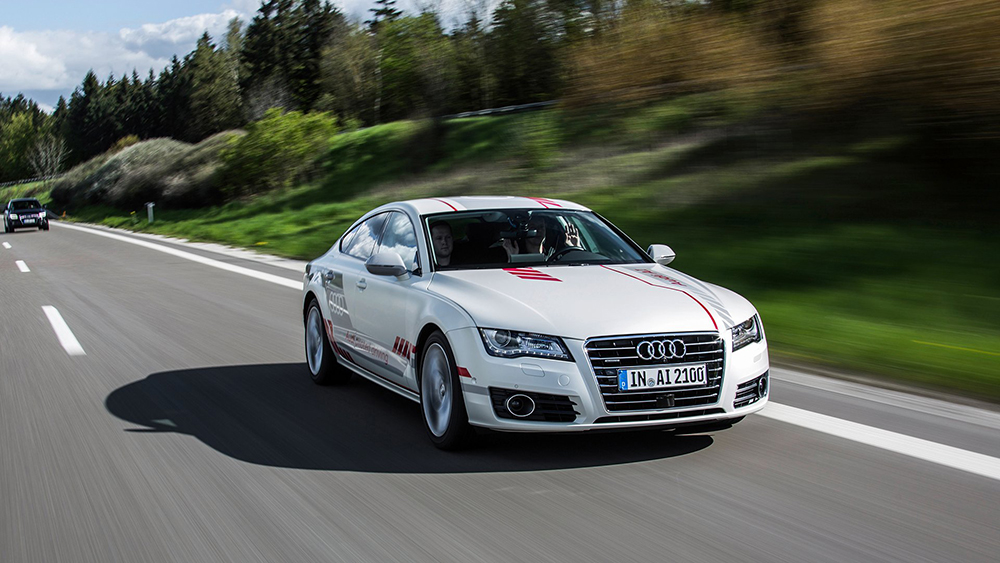
Audi’s autonomous A7 research car has not only learned how to autonomously perform all of its driving manouevres on the highway, it’s learned good driving manners!
‘Jack’ as it’s affectionately known exhibits a driving style that is adaptive to the given situation, safe and especially interactive with other road users.
Audi reports that ‘Jack’ confidently deals with hazardous points on the road and now gives trucks and wider berth when passing and signals upcoming lane changes in a timely fashion.
The cooperative attitude of ‘Jack’ is especially apparent when other vehicles want to merge into the lane, such as on an expressway. Here the test car decides – based on the selected driving profile – whether to accelerate or brake, depending on which is best suited to handling the traffic situation harmoniously for all road users.
Some would suggest such courteous driving habits surpass those of many real live human drivers on today’s roads!
The super brain of the vehicle is the central driver assistance controller, or zFAS. It uses state-of-the-art, high-performance processors to evaluate the signals from all sensors in real-time and create a model of the car’s surroundings. This model represents the prevailing traffic situation as accurately as possible and lets the zFAS calculate upcoming manouevres.
Audi has already derived systems for assisted driving from the tested technologies. Audi is currently offering production car technologies such as the function for assisted driving in traffic jams in the Audi A4 and Audi Q7.
Audi predicts that in the future, cars and the infrastructure will communicate with one another more intensively. In the future, information on variable-message traffic signs will be digitally transmitted into the car in order to assist the traffic flow.
Another step forward is Car-to-Car communication between automobiles that are travelling on the same routes. They can report on hazardous points and accidents in real time. The driving speeds of other road users operating with autonomous driving are then automatically adjusted to the potential hazard.
Recent Comments
- { Enjoyed your Forest of Bowland in the BMW X5M, particularly the photo of the BMW in front of the main part of Stonyhurst College where... }
- { Bantam designed the Jeep, not Willy's or Ford. The American military gave the original Bantam prototype to Willys and Ford to copy. There is plenty... }
- { All Escalades come with a 6.2-lilter V8 engine that produces 420 horsepower. A six-speed automatic is the only transmission offered and drives the rear wheels.... }
- { Alexandra is an excellent journalist. }
Popular Posts
- Journey to a ‘Sparkling’ Luxury Okanagan Resort “Four lucky readers will put a Dodge Journey’s weekend-...
- The Need For Speed: Hike Those Highway Limits More than half of those polled believe the province sho...
- Drives-U-Crazy… Erratic drivers. An early morning drive from Kelowna to Vancouver is nor...
- Readers Respond: The Pros and Cons of Increasing B.C. Speed Limits Increasing the speed limits will only increase risk to...
- Honda CR-V Review: The Compact Crossover To Get Things Done The CRV is a very stylish and aerodynamic crossover veh...






